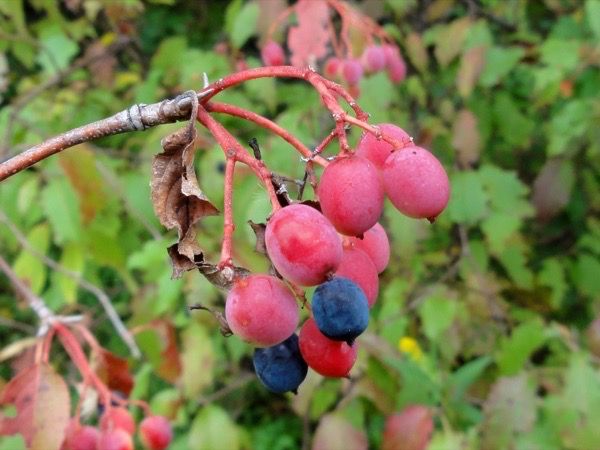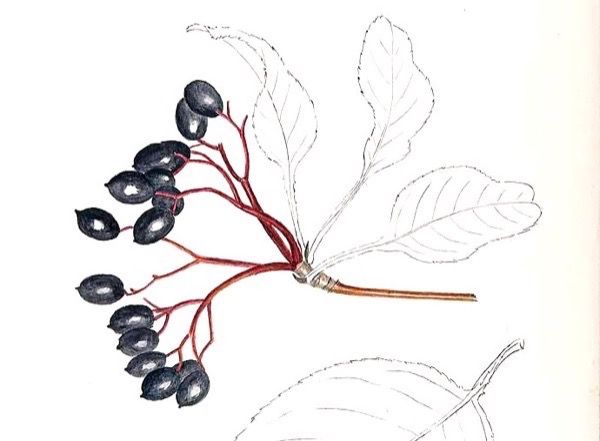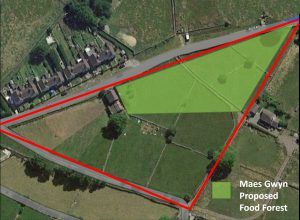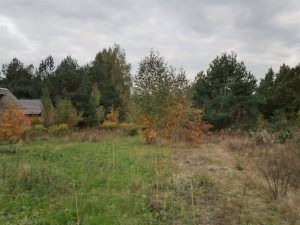Sheepberry is a small to medium sized deciduous tree with edible and medicinal uses. It grows to 9m (30ft) by 5m (16ft) with a short trunk up to 25cm (10″) in diameter. It is one of the largest of the viburnums and has a good compact habit, lustrous foliage, abundant beautiful flowers and an attractive edible fruit. It also has excellent autumnal colour. Leaves are oval 5 – 10cm (2–4″) long and 2 – 5cm (0.75–2″) broad, wedge-shaped, rounded or subcordate at base, and arranged in opposite pairs. It flowers in early summer, and the seeds ripen in autumn. The small, round fruit, with a long oblong oval stone, is blue-black and 8–16mm (0.3–0.6″) long on a reddish stem; it is thick skinned, sweet and juicy. The flowers are hermaphrodite and are pollinated by insects. The plant is not self-fertile. Planting habitats include: a woodland garden sunny edge, dappled shade, and as a hedge.
The fruit can be eaten raw or cooked. It can also be dried for winter use. The fruit is variable in size and quality, the best being about 15mm (0.6”) long, pulpy, very sweet, somewhat juicy and pleasant tasting but with a thick skin and a single large seed. The fruit is said to be best after a frost, but it is sometimes dry.
The bark is antispasmodic, used to treat muscular spasms and cramps. A decoction of the roots has been used to treat irregular menstruation and the spitting of blood. An infusion of the leaves has been used in the treatment of measles. An infusion of the leaves has been drunk, or a poultice of leaves applied, in the treatment of dysuria.
The plant is grown as a hedge in N. America. The wood is heavy, hard, close-grained, and malodorous, but of no commercial value due to the small size of the trees.
An easily grown plant, it succeeds in most soils but is ill-adapted for poor soils and for dry situations. It prefers a deep rich loamy soil in sun or semi-shade. Best if given shade from the early morning sun in spring. A very hardy plant, tolerating temperatures down to about -30°c (-22°f). A fast-growing but short-lived species in the wild. It readily sprouts from the roots and forms thickets, a habit that is undesirable in small gardens. The plants grow well, but do not usually fruit well in Britain. This is probably because they are self-incompatible and need to grow close to a genetically distinct plant in the same species in order to produce fruit and fertile seed.
Seed is best sown in a cold frame as soon as it is ripe. Germination can be slow, sometimes taking more than 18 months. If the seed is harvested ‘green’ (when it has fully developed but before it has fully ripened) and sown immediately in a cold frame, it should germinate in the spring. Stored seed will require 2 months warm then 3 months cold stratification, and can still take 18 months to germinate. Prick out the seedlings into individual pots when they are large enough to handle and grow them on in a cold frame or greenhouse. Plant out into their permanent positions in late spring or early summer of the following year. Cuttings of soft-wood are taken in early summer and put in a frame. Pot up into individual pots once they start to root and plant them out in late spring or early summer of the following year. Cuttings of half-ripe wood, 5–8 cm (2–3”) long with a heel if possible, in mid summer and in a frame. Plant them into individual pots as soon as they start to root. These cuttings can be difficult to overwinter; it is best to keep them in a greenhouse or cold frame until the following spring before planting them out. Cuttings of mature wood should be wintered in a frame. They should root in early spring – pot them up when large enough to handle and plant them out in the summer if sufficient new growth is made, otherwise keep them in a cold frame for the next winter and then plant them out in the spring. Layering of current seasons growth is possible in mid-summer and takes 15 months.
Sheepberry
Viburnum lentago
Family: Adoxaceae
Known Hazards: None known
Natural Habitats: Rich soils along woodland borders, edges of streams etc, it is also found on rocky hillsides etc.
Natural Range: Northern N. America – New Brunswick to Saskatchewan, south to Virginia and Nebraska.
Hardiness Zones: USDA 2–8. PFAF 2.
Type & Size: Small to medium deciduous tree growing to 9m (30ft) by 5m (16ft)
Growth: Medium
Soil: light (sandy), medium (loamy) and heavy (clay) soils. It prefers moist soil.
Soil pH: acid, neutral and basic (alkaline) soils.
Light: semi-shade (light woodland) or no shade.

Vojtěch Zavadil commons.wikimedia.org/wiki/User:Vojtěch_Zavadil

R. A. Nonenmacher commons.wikimedia.org/wiki/User:Nonenmac
Plant Database https://pfaf.org/user/Plant.aspx?LatinName=Viburnum+lentago





